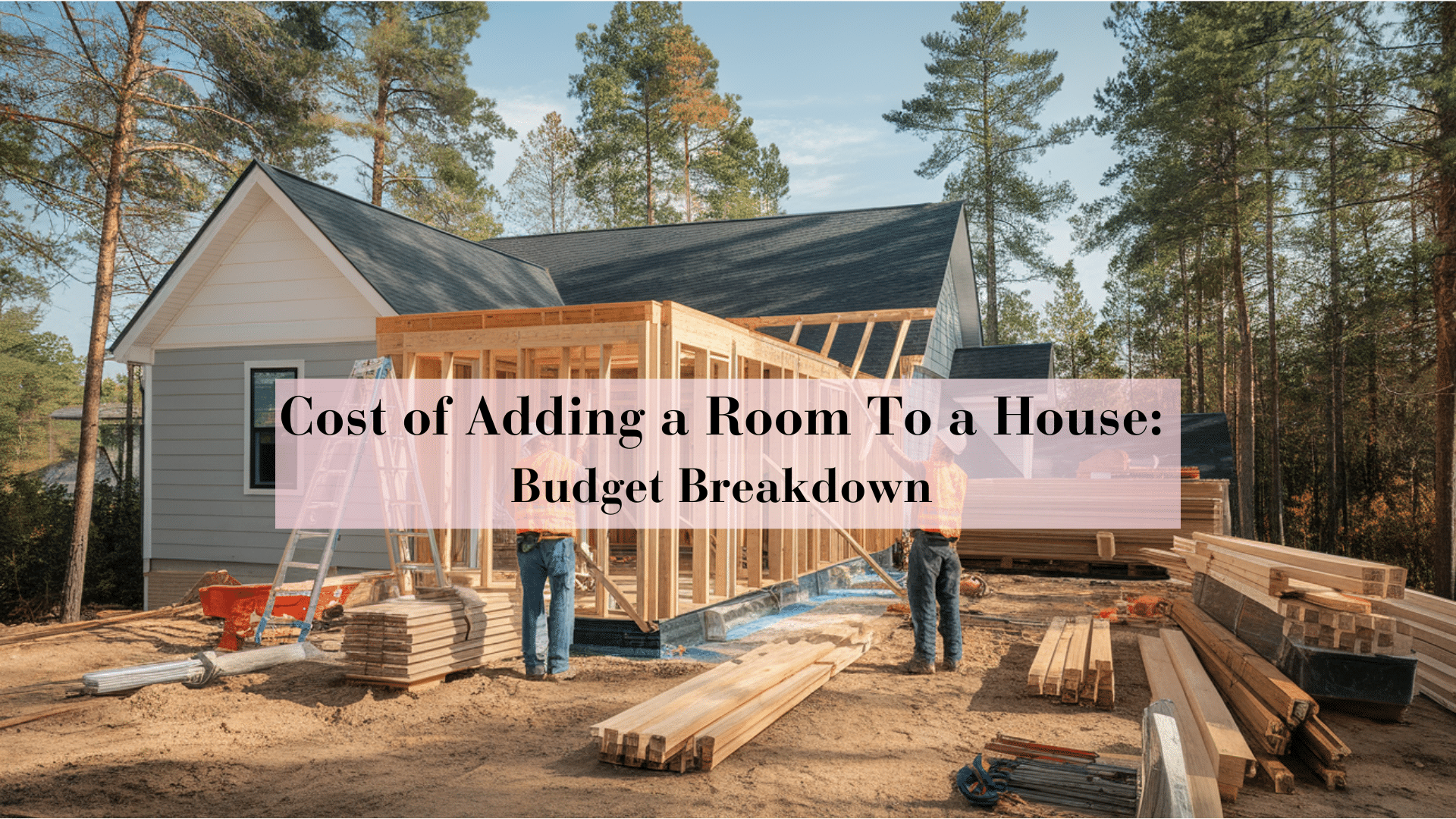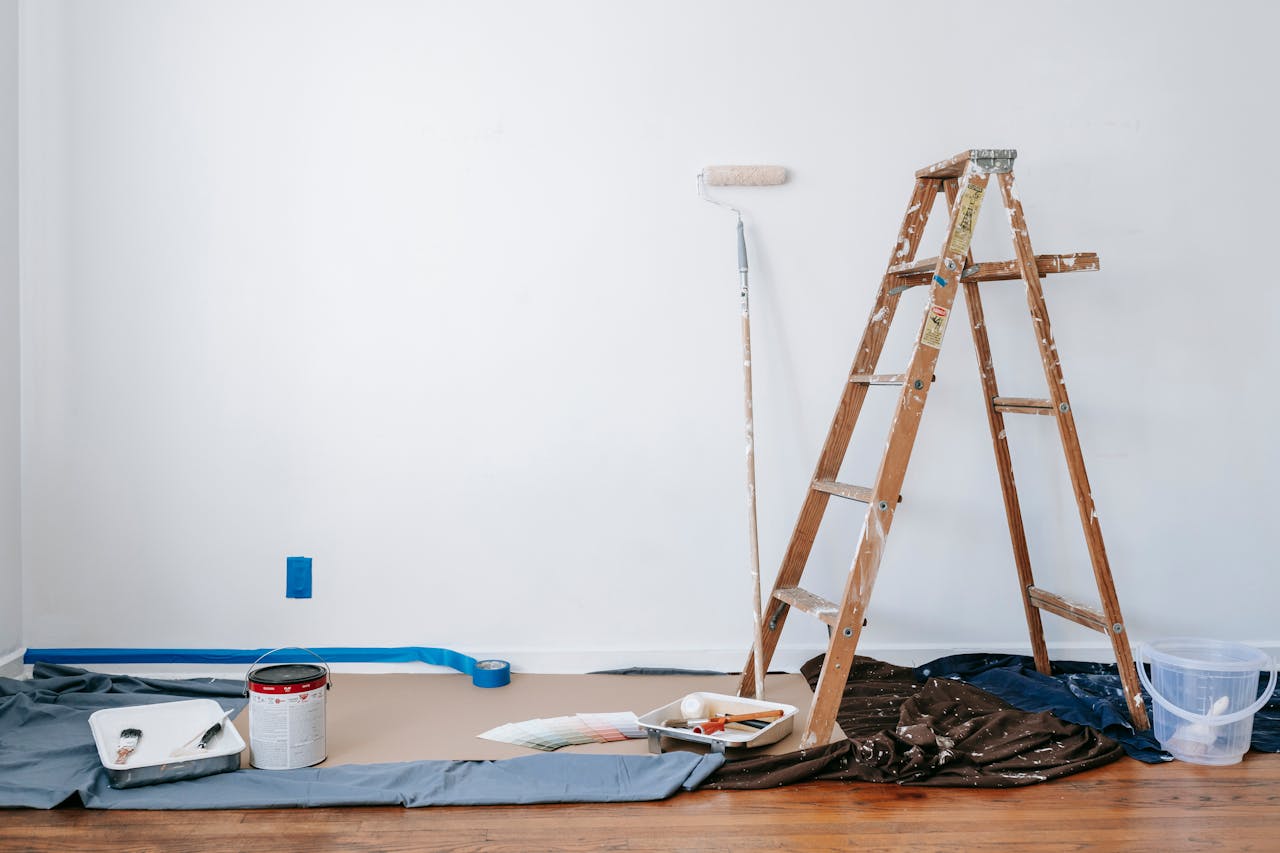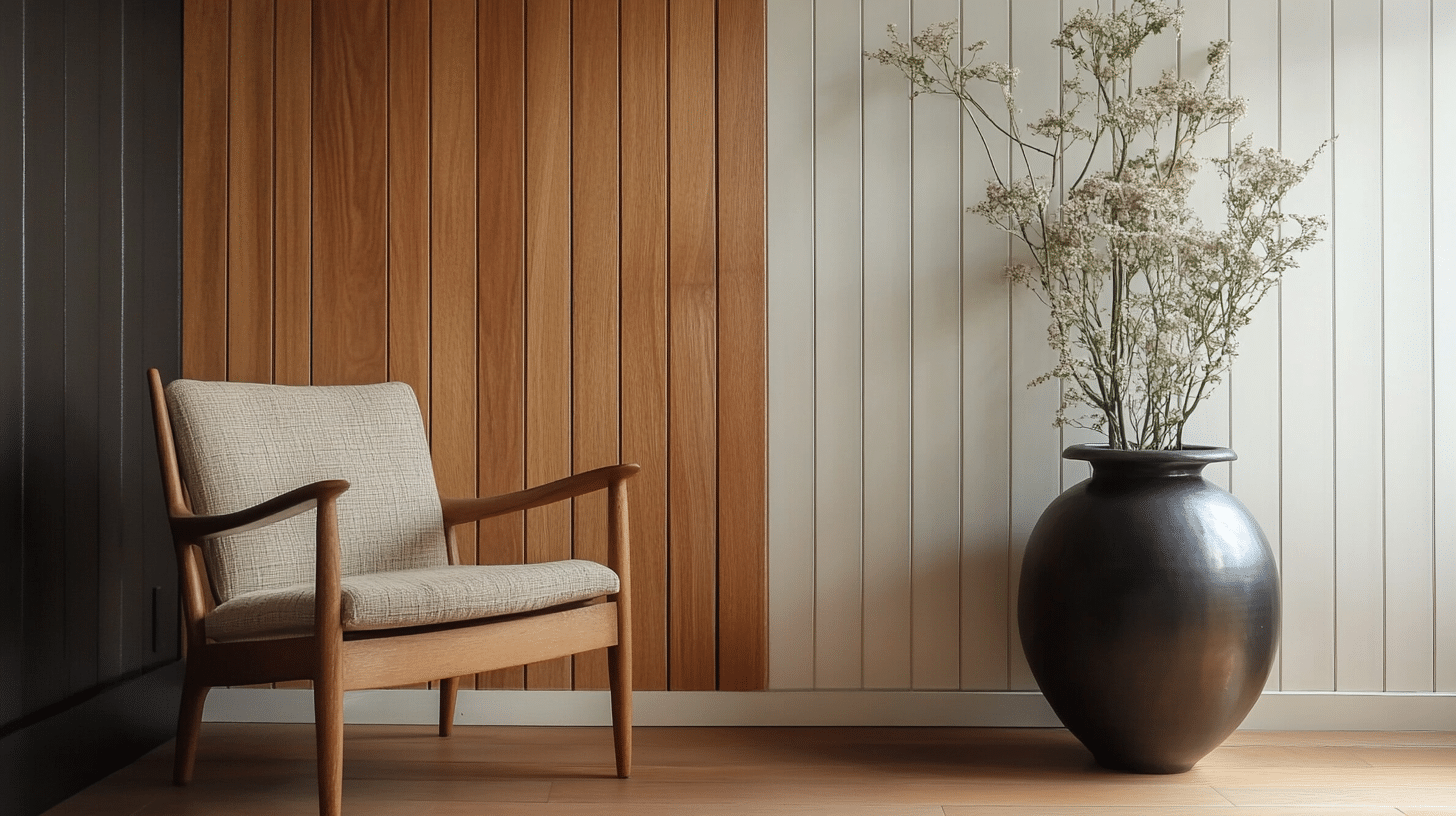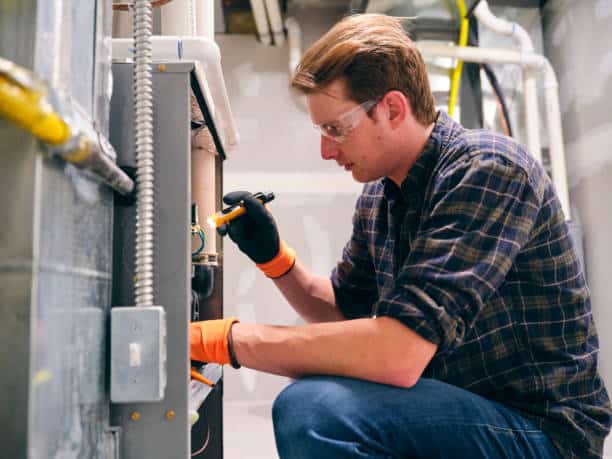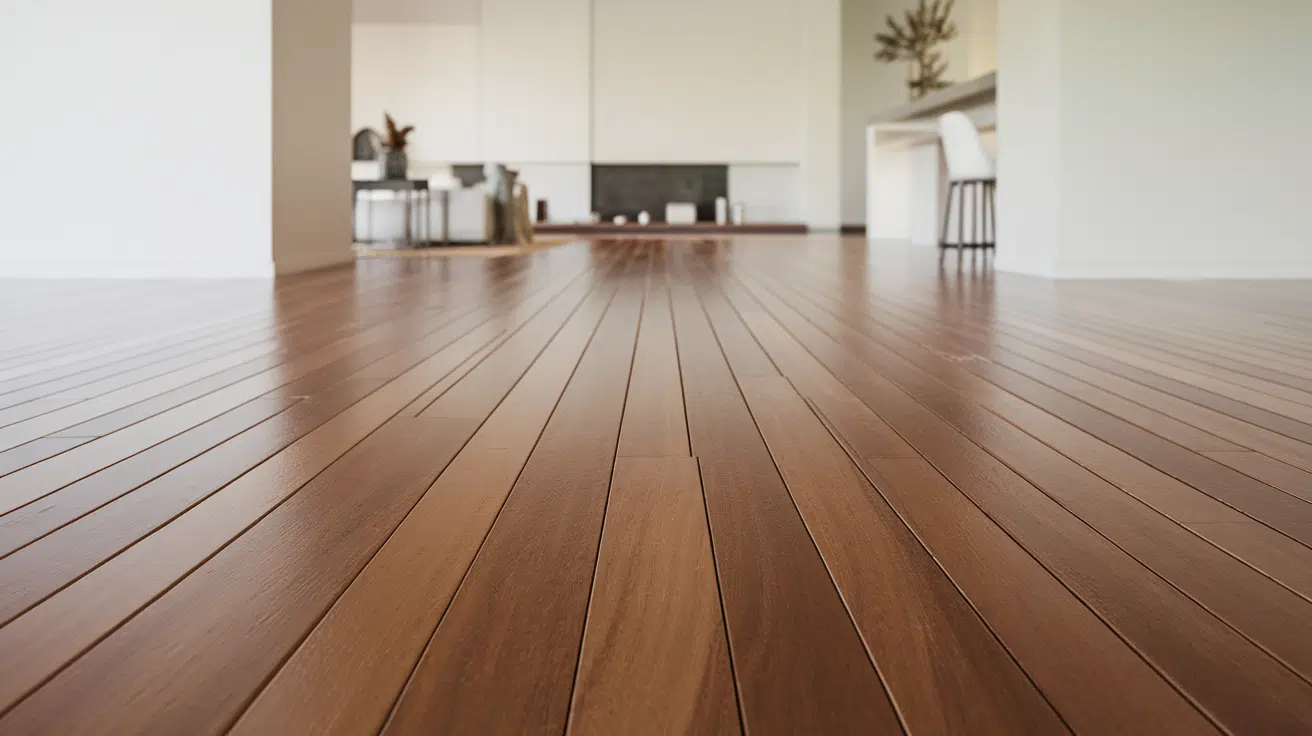Cost of Adding a Room to a House: Budget Breakdown
Many homeowners think about adding an extra room when their living space starts feeling too small.
Room additions offer a practical solution whether you need a home office, another bedroom for a growing family, or a way to boost your property’s market value.
But how much will this project cost? The price of adding a room can vary greatly, ranging from $20,900 to $72,600 for most homes.
Some projects might even cost more depending on several key factors.
The size of the addition, materials you choose, local labor rates, permit requirements, and the type of room all play important roles in determining the final price tag.
Understanding these elements can help you budget effectively for your home improvement project.
Factors that Influence the Cost of Adding a Room
The final bill for your room addition can change quite a bit based on several important elements.
Understanding these factors will help you plan your budget more carefully:
1. Size and Complexity
The bigger your planned room, the more you’ll pay.
A basic 10×10 room will cost much less than a 400-square-foot family room.
Complex designs with unusual angles or layouts require more planning and work time, increasing your costs.
2. Materials
Your choice of materials has a huge impact on price.
Your budget is affected by foundation materials, framing lumber, roofing, interior finishes, flooring, window quality, and insulation type.
Higher-quality materials will increase costs but may offer better durability and energy efficiency.
3. Labor Costs
What you pay workers varies widely based on where you live, your contractor’s experience level, current demand for building services, and project timeline requirements.
Some regions have much higher construction costs than others.
4. Permits and Inspections
Don’t forget to budget for building permits, multiple inspections, possible zoning variance applications, and final occupancy approvals.
These official costs vary by location but are non-negotiable parts of legal construction.
5. Room Type
Different rooms have different price points.
Basic bedrooms tend to be less expensive, while sunrooms (around $21,600 to $43,200 for a 12×12 space), family rooms (about $50,000 to $100,000 for 400 square feet), and master bedroom suites ($75,000 to $150,000) cost more.
Specialized rooms with plumbing or complex electrical needs will always cost more than simple spaces.
Average Cost of Room Additions by Type
Different types of room additions come with their price ranges based on their specific needs and features.
Here’s what you can expect to pay for various types of room additions:
Sunroom
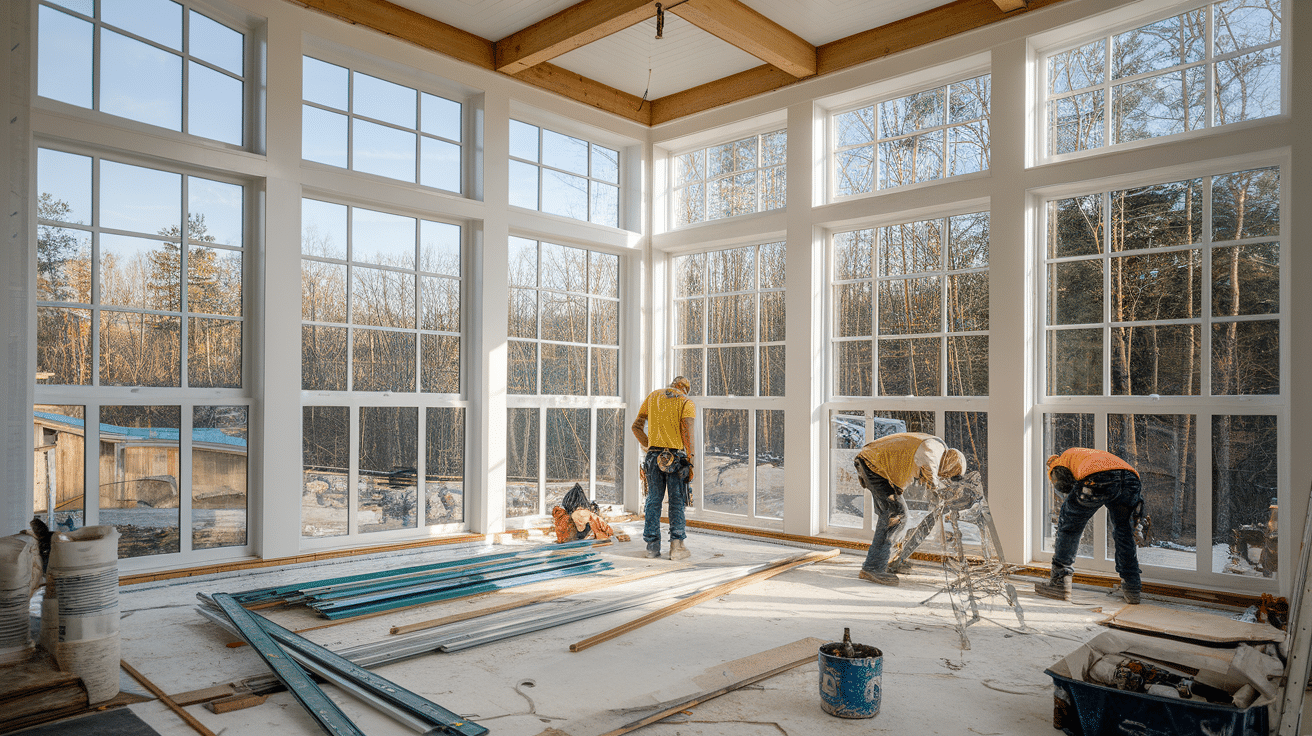
A standard 12×12 sunroom typically costs between $21,600 and $43,200.
The price varies based on:
- The amount of glass used
- Whether you need a new foundation
- Heating and cooling requirements
- The type of connection to your existing home
Sunrooms with basic windows cost less than those with full glass walls.
Adding electrical outlets and climate control systems will push costs toward the higher end.
Family Room
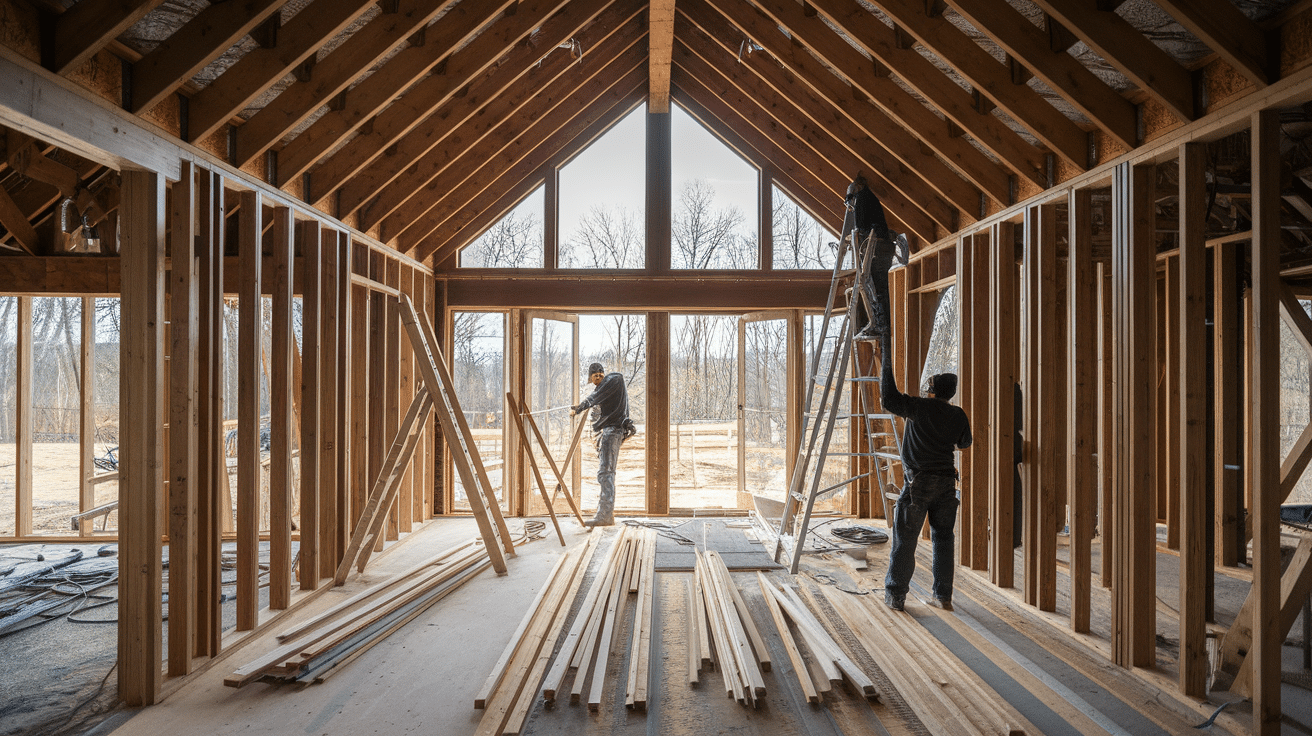
For a 400-square-foot family room, expect to pay between $50,000 and $100,000.
This price includes:
- Standard foundation work
- Basic framing and drywall
- Simple flooring options
- Standard windows and doors
Your costs will increase if you add features like:
- Built-in entertainment centers
- Custom lighting systems
- Fireplace installation
- Higher ceilings
- Premium flooring materials
Master Suite
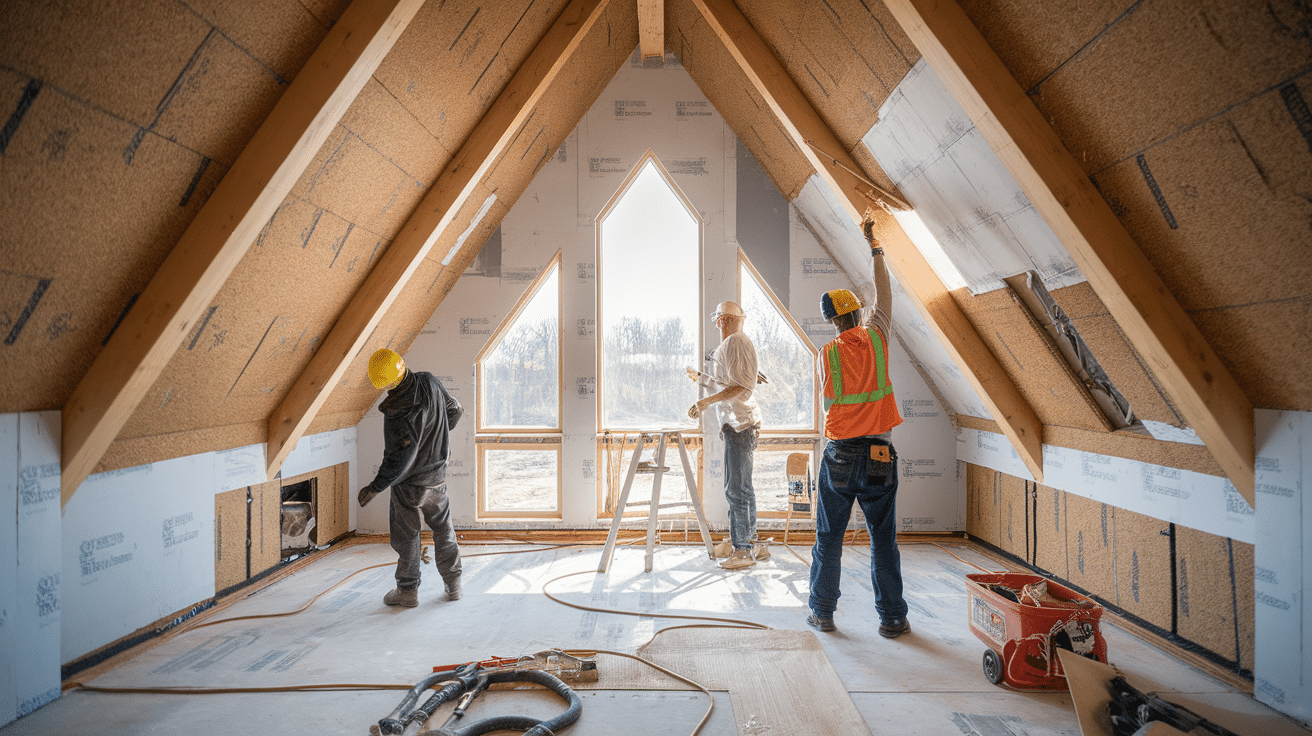
Adding a master suite with a bathroom and walk-in closet is one of the more expensive additions, ranging from $75,000 to $150,000.
This higher cost reflects:
- Plumbing requirements for the bathroom
- More complex electrical work
- Additional interior walls
- Specialized fixtures and fittings
- More square footage overall
Due to plumbing, tile work, and fixtures, the bathroom alone can represent 30-40% of the total master suite cost.
Basic Room Additions
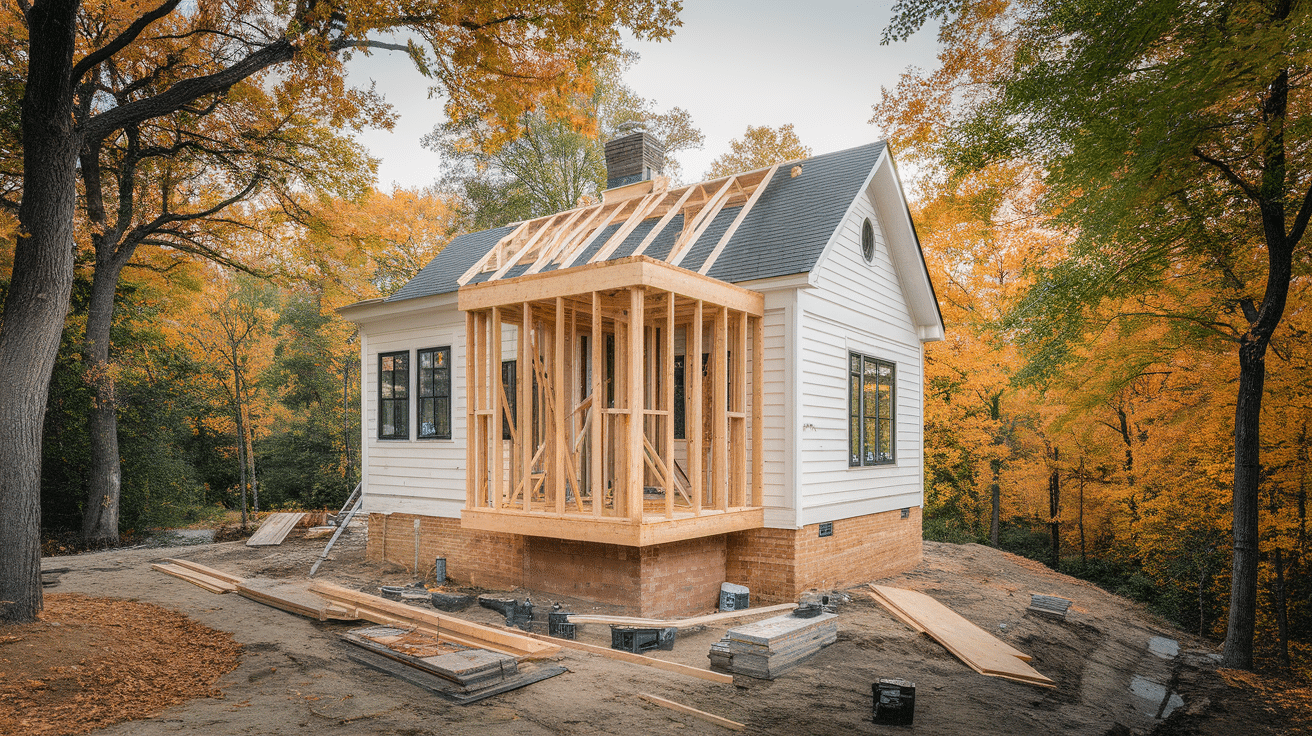
A simple 10×10 room addition might cost between $10,000 and $25,000.
These basic additions usually include:
- Simple foundation
- Standard framing
- Basic windows
- Minimal electrical work
- Simple finishes
When kept simple, these smaller additions offer the best value per square foot, averaging $100-$250 per square foot compared to the higher end of specialized rooms.
How Much Does it Cost Per Square Foot?
Understanding the cost per square foot can help you create a more accurate budget estimate when planning your room addition.
Cost Range
On average, home additions cost between $86 and $208 per square foot.
This wide range reflects the many variables that affect your project.
Basic additions with standard materials are the lowest priced, while custom additions with premium finishes are the highest.
Cost Breakdown by Room Type
Based on the average per-square-foot pricing, a 10×10 room (100 square feet) typically costs between $8,600 and $20,800.
For a larger 20×20 room (400 square feet), you might spend between $34,400 and $83,200.
Smaller additions often have higher per-square-foot costs because fixed expenses are spread across fewer square feet, though the total price is lower than larger projects.
Location and Its Effect on Cost
Your home’s location significantly impacts the cost of your room addition project.
Here’s a breakdown of how location affects pricing:
Urban vs. Rural Costs
| Factor | Urban Areas | Rural Areas |
|---|---|---|
| Labor Costs | Higher due to increased demand and cost of living | Generally lower with potentially fewer specialists available |
| Material Delivery | Lower due to proximity to suppliers | Higher due to transportation costs and delivery fees |
| Permit Fees | It is more expensive and may have stricter requirements | Typically less costly with fewer restrictions |
| Site Access | Often limited, may require special equipment | Usually easier with fewer space constraints |
| Competition | More contractors but higher demand | Fewer options but potentially more availability |
High-Cost Areas
| City/Region | Cost Premium | Key Factors |
|---|---|---|
| New York City | 20-50% above national average | Limited space, strict building codes, high labor costs |
| San Francisco | 30-60% above national average | Limited contractors, high demand, expensive permits |
| Boston | 15-35% above national average | Historic district restrictions, high labor rates |
| Los Angeles | 10-30% above national average | Large lot sizes but high permit costs and labor rates |
Regional Variations
| Region | Cost Per Square Foot | Notable Influences |
|---|---|---|
| Northeast | $150-$230 | Weather considerations, older homes, higher labor costs |
| West Coast | $120-$250 | Earthquake requirements, high demand in metro areas |
| Midwest | $95-$175 | Lower labor costs, fewer weather restrictions |
| South | $86-$150 | Lower cost of living, fewer winter considerations |
| Mountain West | $110-$190 | Varied terrain, weather considerations, transport costs |
Ways to Save on Room Addition Costs
Adding a room to your house doesn’t have to break the bank.
With careful planning, you can find several ways to reduce costs while still creating a quality addition to your home.
1. Simplify Design
Keep your room design simple and practical. Stick to square or rectangular shapes rather than complex layouts with multiple angles.
Avoid features that require extensive structural work, such as vaulted ceilings or large bay windows.
Using existing doorways to connect to your new space instead of creating new openings can also lower costs significantly.
2. DIY Opportunities
If you have the skills, consider handling some parts of the project yourself.
Many homeowners can complete tasks such as painting, installing baseboards, laying flooring, and basic landscaping without professional help.
Be realistic about your abilities, and leave structural, electrical, and plumbing work to licensed professionals to avoid costly mistakes.
3. Choose Cost-Effective Materials
Select materials that offer good value without compromising quality. Vinyl flooring or laminate can be attractive alternatives to hardwood.
Stock cabinets cost less than custom options. Standard-sized windows and doors are less expensive than custom sizes.
Consider using some recycled or reclaimed materials where appropriate to add character while saving money.
4. Get Multiple Quotes
Always collect at least three detailed estimates from reputable contractors.
This gives you leverage to negotiate and helps you understand the fair market rate for your project.
Make sure each quote includes the same scope of work and materials for accurate comparison.
Check references and past projects before making your final decision.
Permits, Inspections, and Hidden Costs of Adding a Room
When budgeting for your room addition, it’s essential to account for regulatory requirements and potential surprises that could impact your bottom line.
Permit Costs
Building permits are mandatory for room additions in most locations.
Permit fees typically range from $400 to $2,000, depending on your project’s size and your local building department.
You may need separate permits for electrical, plumbing, and mechanical work, each with its own fee.
Inspection Fees
Throughout construction, your project will require multiple inspections to ensure compliance with building codes.
These typically include foundation, framing, electrical, plumbing, insulation, and final inspections.
Some localities include inspection costs in the permit fees, while others charge separately, ranging from $50 to $200 per inspection.
Unexpected Costs
Smart homeowners set aside a contingency fund of 10-20% of the total project cost to cover unexpected expenses.
Common surprises include discovering outdated wiring, finding water damage, encountering soil issues, weather delays, and changes in material prices during lengthy projects.
When is Adding a Room Worth the Cost?
Deciding whether to invest in a room addition requires careful consideration of both financial and personal factors.
Return on Investment
Adding a room can be financially worthwhile when:
- Your home lacks common features in your neighborhood (like a master suite or adequate bedroom count)
- Your current home value is below neighborhood averages
- You plan to stay in your home for at least 5-7 years
- The additional costs are less than buying a larger home when factoring in moving expenses and higher mortgage costs
- The addition addresses a significant functional need that makes your home more marketable
Most room additions return about 50-60% of their cost in home value, with bedroom and bathroom additions typically yielding the best returns.
When Not to Add a Room
Adding a room may not be worth the expense when:
- The addition would make your home the most expensive in the neighborhood
- The cost exceeds 15% of your current home value
- You’re planning to sell within 2-3 years
- The addition would eliminate valuable outdoor space
- Your current home already has structural or maintenance issues that should be addressed first
- The space could be achieved by remodeling existing areas at a lower cost
Consider your long-term plans, local housing market, and personal needs when making this significant investment decision.
Conclusion
Adding a room to your house is a major investment, with costs typically ranging from $20,900 to $72,600. The final price depends on size, materials, labor, permits, and room type.
Costs per square foot average between $86 and $208.
Your location also significantly influences overall expenses.
To manage costs, simplify your design, consider DIY work where appropriate, choose cost-effective materials, and get multiple quotes.
Don’t forget to budget for permits, inspections, and a contingency fund for unexpected issues.
With careful planning and professional guidance, your room addition can provide valuable space that enhances both your daily life and your home’s value.

